Track leads from SEO in Eloqua
Learn how to use a tool called Attributer to track how many leads you get from your SEO efforts in Eloqua

A few years ago, the marketing team at a software company came to us.
They had recently launched a big SEO initiative and traffic to their website skyrocketed. But there was one big problem: they had no idea if any of those visitors were actually turning into leads or customers.
Like many marketers, they were just using Google Analytics, which can show how many website visitors they got from organic search, but not how many leads and customers.
That’s Attributer comes in.
In this article, we’ll walk you through how to use Attributer with Eloqua to capture organic search data every time someone submits a form on your website. We’ll also share a few powerful reports you can create to track how many leads (and customers) your SEO efforts are really delivering.
4 steps to track leads & customers from SEO in Eloqua
It’s easy to track how many leads you get from SEO when you use Attributer with Eloqua. Here’s how it works:
1. Install Attributer on your website

When you start your 14-day free trial of Attributer, you’ll get a small snippet of code to add to your website.
You can install it directly through your site’s settings or via a tool like Google Tag Manager, whichever works best for your setup.
Need help? Step-by-step guides are available for popular platforms like WordPress, Wix, Webflow, and Squarespace here.
2. Add hidden fields to your forms

After the tracking code is installed on your site, the next step is to add a set of hidden fields to your Eloqua lead capture forms. These fields allow Attributer to pass through attribution data:
- Channel
- Channel Drilldown 1
- Channel Drilldown 2
- Channel Drilldown 3
- Landing Page
- Landing Page Group
To add hidden fields to your Eloqua forms for Attributer, open the form in Eloqua, drag and drop six hidden fields into it, and configure each with the appropriate label and static value. You can see step-by-step instructions here.
3. Attributer writes SEO data into the hidden fields
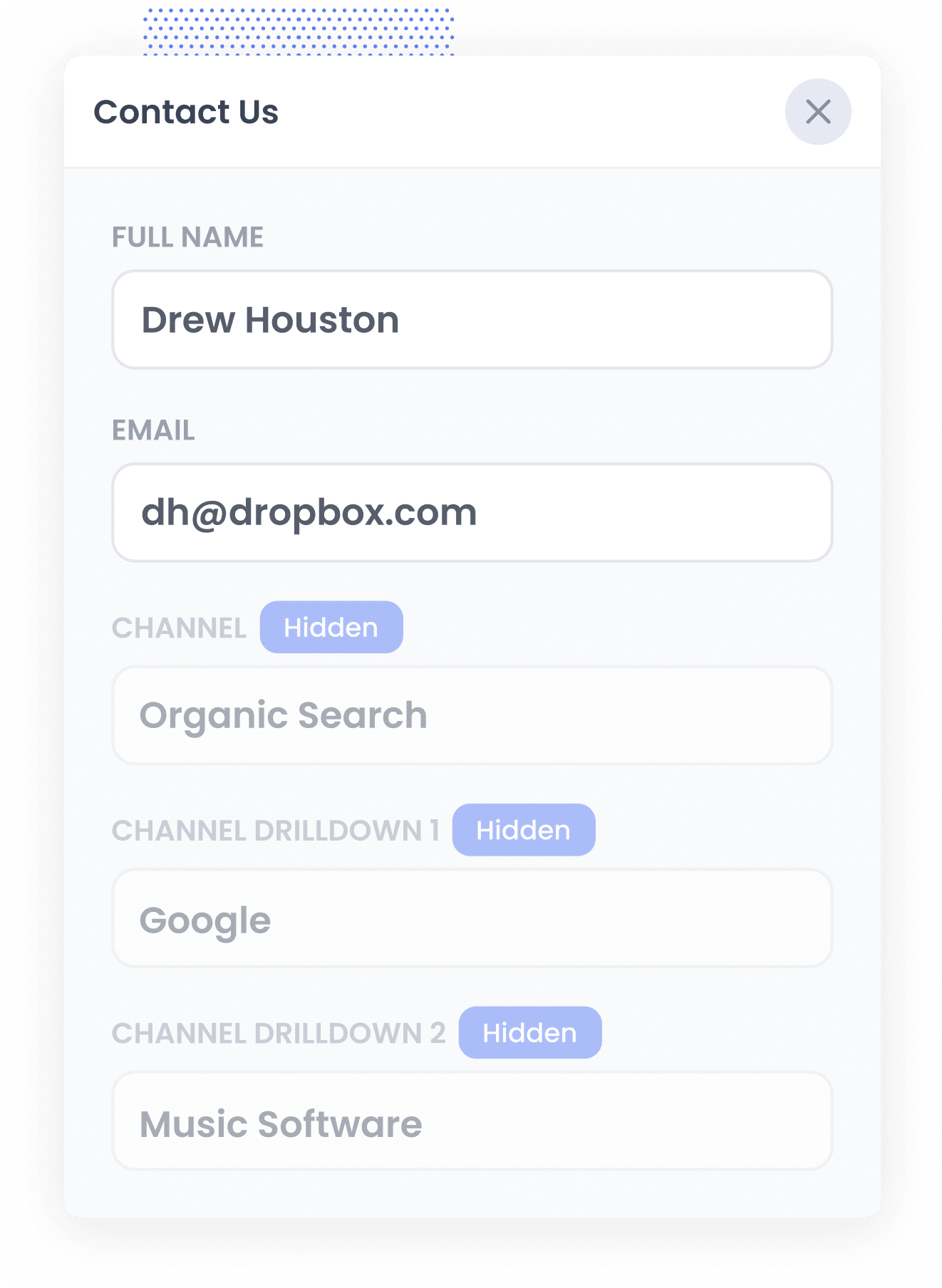
When a visitor lands on your website, Attributer analyses key data points to determine how they arrived.
It then sorts the visitor into a specific channel (such as Organic Search, Paid Search, or Paid Social) and stores this information in their browser.
Later, when the visitor submits a form, like a ‘Contact Us’ or ‘Request a Quote’ form, Attributer automatically populates the hidden fields with detailed attribution data, like the fact they came from Organic Search, what search engine they used, and even what keyword they searched for (when available).
4. SEO data is captured with each lead
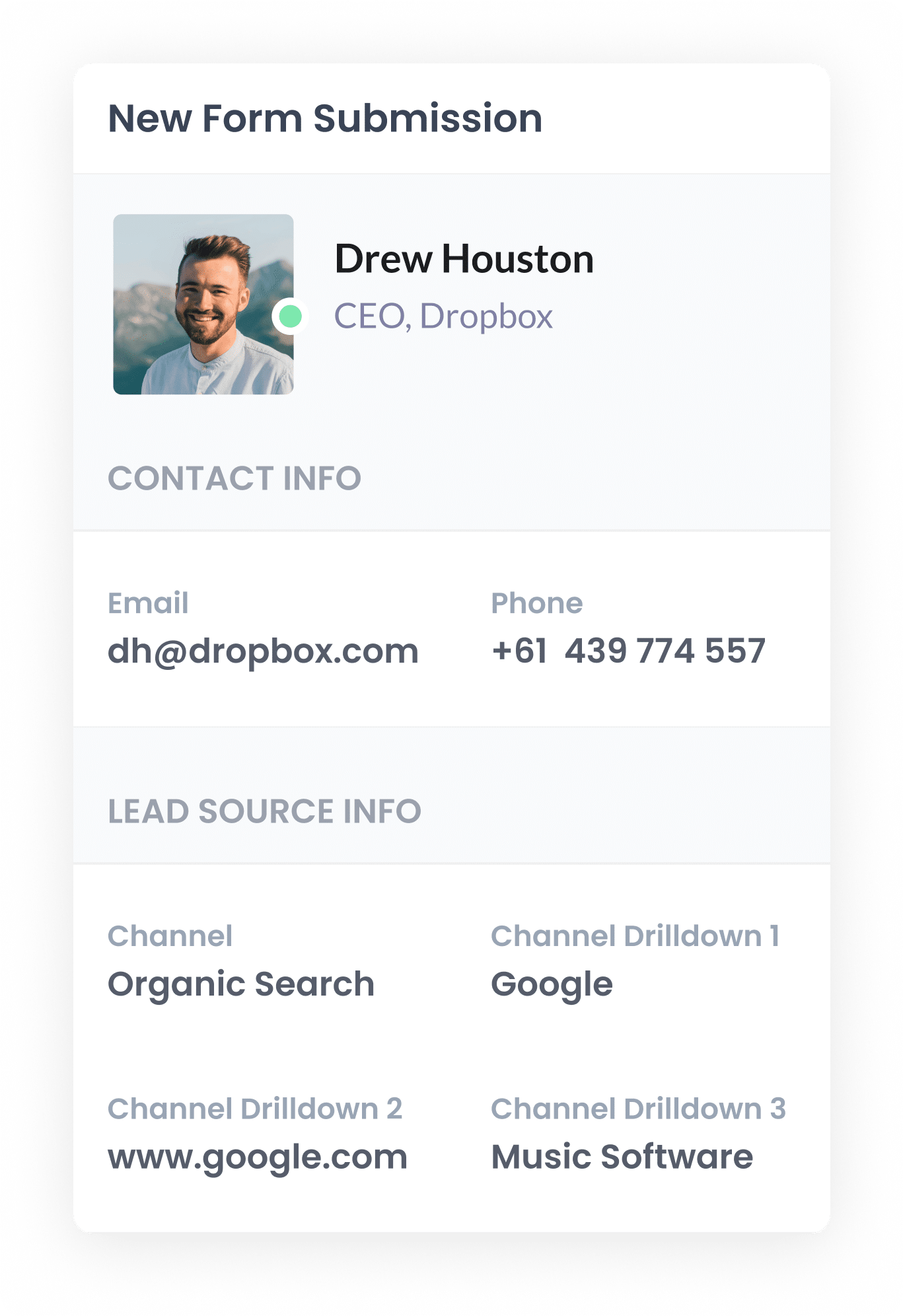
When the visitor submits the form on your website, Eloqua captures the data that Attributer placed in the hidden fields, alongside the information the lead entered (like their name, email, phone, etc).
What data gets captured
Attributer captures two key types of data for every lead: how they arrived on your website (channel) and which content brought them there (landing page).
For example, say you’re on the marketing team for a residential building company. A potential client finds your site through an organic Google search, here’s what Attributer would record:
- Channel = Organic Search
- Channel Drilldown 1 = Google
- Channel Drilldown 2 = www.google.com (or a regional domain like google.com.au)
- Channel Drilldown 3 = custom home builders Brisbane (the keyword used, if available)
Attributer also captures the exact page they visited:
- Landing Page = buildwisehomes.com.au/blog/what-to-know-before-building-in-brisbane
- Landing Page Group = /blog
This data gives you clear visibility into which content is driving leads and customers for your business, so you can focus your SEO and content efforts on creating more of that kind of content.
What you can do with the data
Once Attributer captures organic search data through your Eloqua forms, you can put that information to work in several different ways:
- View in Eloqua - You can see the attribution data on the contact record in Eloqua, giving you a clear picture of where each lead has come from.
- Add to lead notification emails: You can include the organic search data in the lead alert emails sent by Eloqua, so your team can quickly see how each lead found your site without needing to dig through reports.
- Send to your CRM: Push the data into your CRM, whether it’s Salesforce, Netsuite, Microsoft Dynamics, or another platform, to run reports on how many leads came from SEO, how many converted into customers, and how much revenue they generated.
- Export and analyse: Export the data to a spreadsheet or connect Eloqua to tools like Google Sheets. From there, you can visualise your SEO performance with simple charts, or connect to tools like Looker Studio for advanced dashboards that reveal which content and channels are driving the best results.
3 example reports you can run when you capture organic search data in Eloqua
Throughout my 15-year marketing career, I’ve spent countless hours working on SEO, creating content, optimising pages, etc.
Along the way, I’ve run hundreds of reports to understand what’s working and what isn't. Below are three of the most insightful reports I’ve relied on time and time again to measure the true impact of our SEO efforts.
1. Leads by Channel
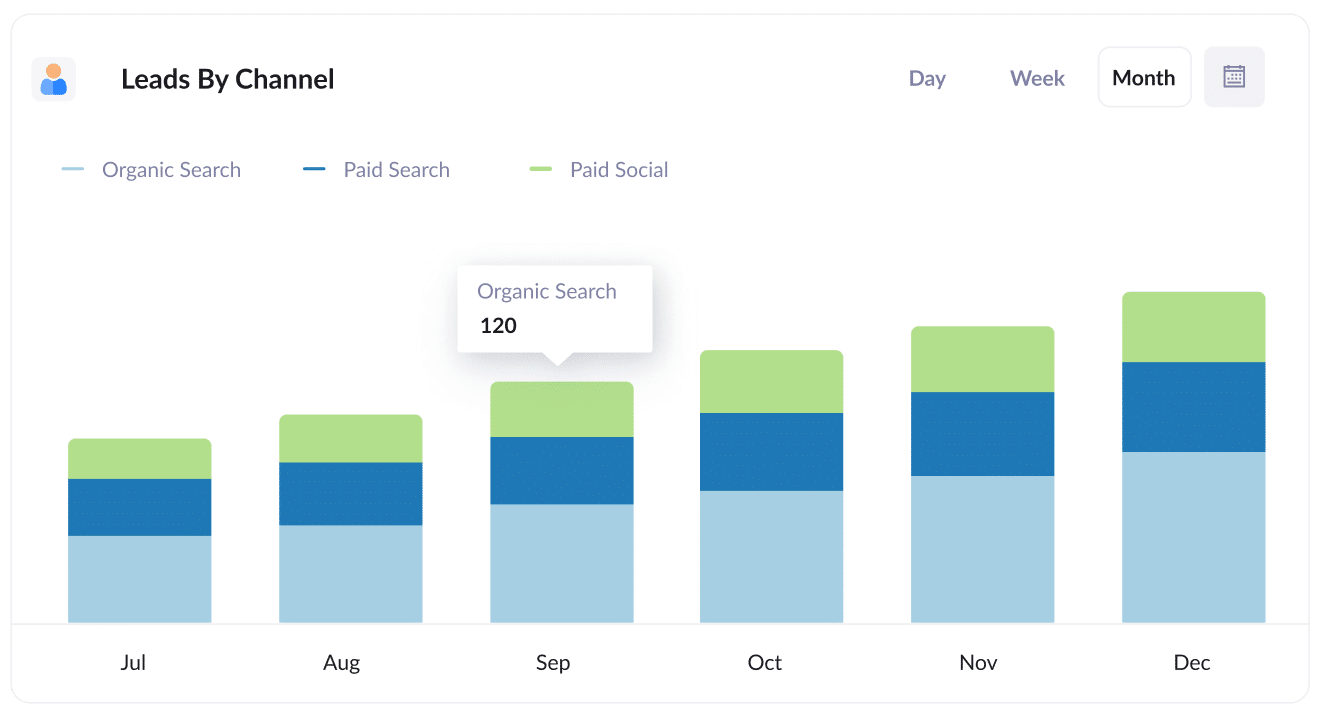
This report gives you a month-by-month breakdown of lead volume by acquisition channel, such as Organic Search, Paid Search, Paid Social and more.
It’s a great way to get a top-level view of how your SEO is performing and whether those efforts are translating into real leads for your business.
It’s also incredibly helpful for budget planning. If Organic Search is consistently outperforming Paid Search in lead generation, yet most of your spend is going to paid ads, it might be time to reallocate resources and double down on what’s working.
2. Leads from Organic Search by Landing Page Group
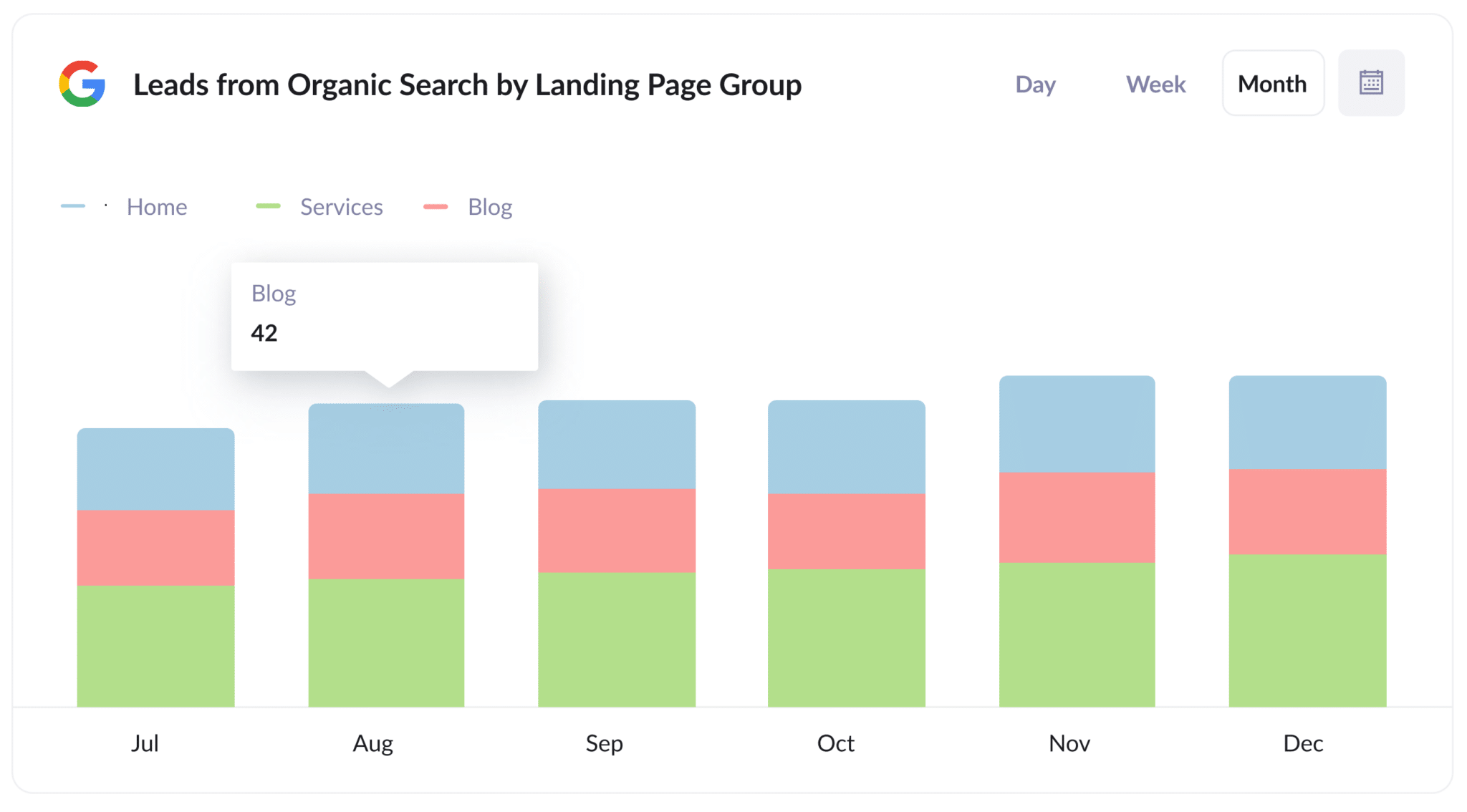
This report highlights how many new leads are coming from organic search each month, organised by landing page group, such as Home, Blog, Services and more.
It’s a great tool for identifying which sections of your website are driving the most leads and customers, helping you make smarter decisions about where to focus your content and SEO efforts moving forward.
3. Leads from Organic Search by Landing Page
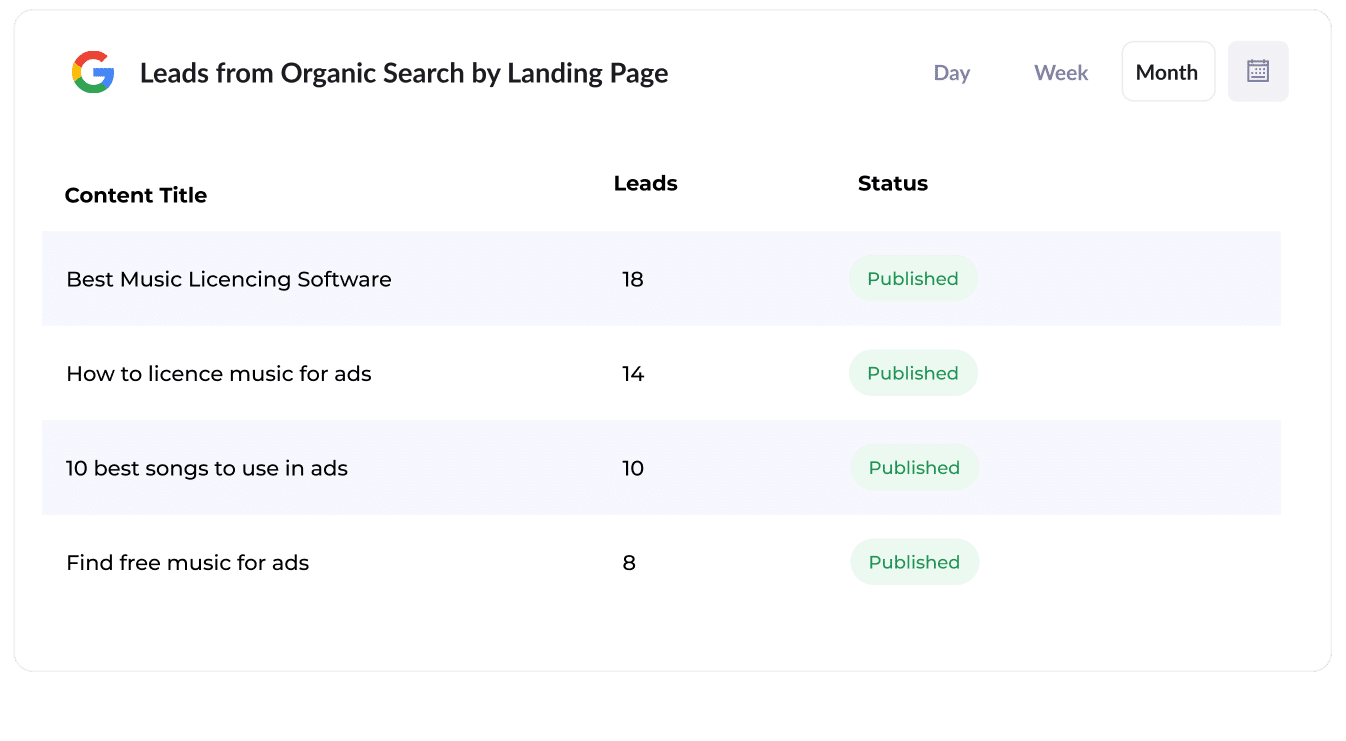
This report reveals how many new leads each piece of content, like a blog post or article, has generated.
It gives you a clear view of which topics and formats are resonating most with your audience, allowing you to double down on high-performing content and refine your content strategy with confidence.
How Attributer helped Flare HR 4x the number of leads they got from SEO
Flare HR, a Sydney-based provider of HR management software, supports thousands of businesses and employs over 100 team members.
As part of their platform, Flare offered a library of HR document templates, such as employment contracts and internal policies, that clients could customise and use in their own business.
Looking to drive more inbound traffic and generate leads, the team made a strategic move: they published these templates publicly on their marketing website.
It worked. Within months, their newly created landing pages for each template were drawing tens of thousands of visits from organic search.
But there was a missing link: they had no visibility into whether that traffic was converting. Were these people becoming users of their product or just downloading the templates and disappearing?
That’s where Attributer came in.
Once installed, Attributer began capturing key data on each website visitor: their acquisition channel (e.g. Organic Search), the specific landing page they visited (e.g. flarehr.com/templates/mobile-phone-policy), and the broader content category (e.g. /templates).
If the visitor completed a form (like the Request A Demo form, for instance), Attributer wrote the data into hidden fields on the form, and the information was automatically passed into Flare’s CRM.
Armed with this data, the Flare team were able to run reports in their CRM that showed how many leads the templates were generating, how many converted into customers, and the revenue associated with each template.
The results were clear: the template strategy drove a 2.4x increase in new leads, at an almost negligible cost-per-lead.
Encouraged by the performance, Flare doubled down, expanding their template library, optimising pages for higher rankings, and ultimately achieving a 4x increase in monthly leads.
“Attributer showed us that our SEO efforts were in fact generating customers & revenue and gave us the confidence to double down. We’ve seen a 4x increase in leads as a result”

James Windon - Co-Founder, Flare HR

Wrap Up
If you're struggling to measure how many leads your SEO efforts are actually generating and how that number is trending over time, Attributer offers a simple, effective solution.
Paired with Eloqua, it gives you clear visibility into which channels and content are driving results. Best of all, it’s free to get started and takes less than 10 minutes to set up. Start your 14-day trial today and take the guesswork out of SEO.
Get Started For Free
Start your 14-day free trial of Attributer today!

About the Author
Aaron Beashel is the founder of Attributer and has over 15 years of experience in marketing & analytics. He is a recognized expert in the subject and has written articles for leading websites such as Hubspot, Zapier, Search Engine Journal, Buffer, Unbounce & more. Learn more about Aaron here.
